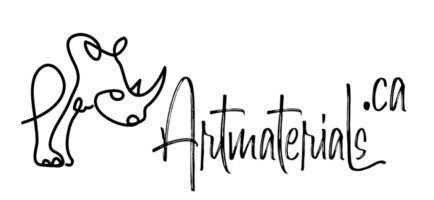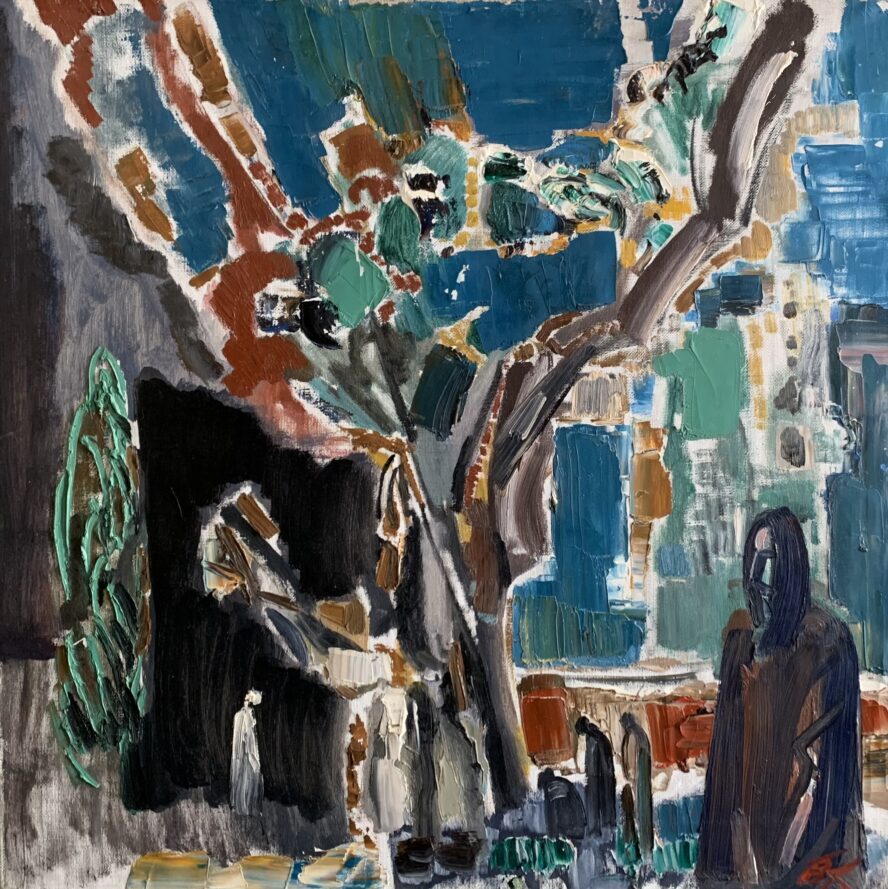How to choose the right canvas and why they are different – are most common questions in any art shop. We’ve already talked about stretching options as well as choice of fabric for your canvas. This time we’ll discuss the final step before your art appears on canvas – sizing and priming.
Canvas, when it’s raw, is just piece of fabric, meaning it absorbs moist and dyes before, during and after painting process. These mean if you paint on untreated canvas:
- paint colours will look much different from what you have on your palette while you’re mixing colours
- your painting will change with time and keep changing in unpredictable way
Also, as bare fabric is soft, makes folds and wrinkles fast that means any paint that forms a film (such as acrylic or oil) after drying may crack and fall off.
That’s why sizing and priming are very important.
Sizing For Canvas
Before any primer or paint layer applied on canvas the fabric has to be sized. Sometimes we can skip priming, but sizing is a must. Why?
Canvas is a piece of fabric, which has threads weaved along and across each other. All this weaving process leaves micro-holes between the treads, creating air circulation and exposing your painting to humidity and other weathering from inside. Also, unsized canvas works like a strainer allowing micro leakage of the paint through it. Sizing is aimed to seal the gaps between treads and create one solid base for your painting.
Size is technically glue that covers all holes and gaps. Historically, artists were using glue made from natural materials. The most popular one was rabbit hide glue as well as bone glue that provides jello-kind substance and dries forming smooth and relatively stable film.
Normally, artists were applying one layer with high-concentrated glue that looks like jelly and then, after full curing, they applied another 2 or 3 coats of glue that was much thinner and smoother.
I have to say, this kind of glue smells terribly and needs immediate application before it gets bad. RUSART Naturals offers sizing for canvas in 2 steps based on this old recipes. We added some essential oils into it to prevent from mold growing and eliminate bad smell.
Later, artists began using gelatine instead of bone or skin glue that offers similar properties.
Nowadays, most manufacturers use synthetic sizing for canvas, such as Poly Vinyl Acetate or acrylic resin. As primer usually is also acrylic based, usually cheap canvas doesn’t have any sizing and has only primer, which makes canvas not suitable for oil painting and barely stable for acrylic painting.
When buying a canvas, just look through it against the light: if you see light coming through gaps between the treads, stay away from this canvas (unless you want just to play around and show it away after short use). Good canvas always blocks the light well.
Primer For Canvas
Priming is important in making decision how to choose a right canvas. It’s technically the first layer that provides adhesion with canvas. Bad adhesion leads to peeling of painting layers and early damage.
However, priming is not always necessary. For example, a lot impressionists such as Claude Monet and many others worked on sized canvas without any primer applies and such technique also provides some interesting effects.
Primer can have different kids of base: oil or emulsion.
Oil-based primer consists of linseed oil mixed with chalk and white pigment. Historically, this kind of primer was used for oil painting as it provided a better adhesion between oil painting and canvas.
Before oil painting was developed in 16th century, artists used primers based on egg-yolk, casein (milk), rabbit skin glue or other kids of stable glues. This primer was mostly used for wood.
Then, artists were mixing oil and glue-based primers and created emulsion primers. Chalk and white pigment serve as hard particles suspending in flexible oil-water emulsion. Such primers reduce risks of cracking and shrinking.
There are many kinds of emulsion-based primers, including casein, polyvinyl acetate, acrylic and others. Well-primed canvas normally has 3 layers of primer before art work begins.
Another thing that is very important to know when choosing a canvas is how much chalk was used in your primer. If for acrylic or tempera painting this factor doesn’t play the main role, for oil painting it’s crucial. Chalk is a very porous material and absorbs a lot of binder. This may cause a lot of problems for oil painters:
- Uneven drying
- Fading of colours
- Cracking of painting layer
Only trusted canvas should be used for most important artworks.
(c) RUSART
















